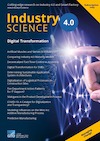Search


Bibtex
Cite as text
@Article{Pruhs+Kusch+Bertagnolli+Viere+Woidasky,
Cite-key = "Pruhs2023Maki",
Year= "2023",
Number= "1",
Volume= "Industry 4.0 Science 39",
Pages= "64-71",
Journal = "Industry 4.0 Science",
Title= "Makigami in the Product Development Process – Using a Lean Methodology to Integrate Sustainable and Circular Product Design",
Author= "Annika Pruhs, Anina Kusch, Frank Bertagnolli, Tobias Viere and Jörg Woidasky, Institute for Industrial Ecology, Pforzheim University of Applied Sciences",
Doi= "https://doi.org/10.30844/I4SE.23.1.64",
Abstract= "In order to implement future improvements in circular product properties such as lifespan extension, continued use or high-quality recycling, industrial product development and design processes must take the entire
ecological and economic life cycle of products into account. This article uses a company example to explain how such processes can be documented and analyzed using the Makigami method to support a comprehensive “Design for Circularity” concept. The chosen approach facilitates the
identification of the application points of circular design decisions and the implementation of validated circular economy principles.",
Keywords= "lean method, makigami, circular economy, product development, circular product design, EU Directive 2009/125/EC, ecodesign approaches, environmentally friendly product design, eco-friendly product design, product carbon footprint",
}
Annika Pruhs, Anina Kusch, Frank Bertagnolli, Tobias Viere and Jörg Woidasky, Institute for Industrial Ecology, Pforzheim University of Applied Sciences(2023): Makigami in the Product Development Process – Using a Lean Methodology to Integrate Sustainable and Circular Product Design. Industry 4.0 Science 391(2023), S. 64-71. Online: https://doi.org/10.30844/I4SE.23.1.64 (Abgerufen 24.12.25)
Open Access
Abstract
Abstract
In order to implement future improvements in circular product properties such as lifespan extension, continued use or high-quality recycling, industrial product development and design processes must take the entire ecological and economic life cycle of products into account. This article uses a company example to explain how such processes can be documented and analyzed using the Makigami method to support a comprehensive “Design for Circularity” concept. The chosen approach facilitates the identification of the application points of circular design decisions and the implementation of validated circular economy principles.
Keywords
Schlüsselwörter
lean method, makigami, circular economy, product development, circular product design, EU Directive 2009/125/EC, ecodesign approaches, environmentally friendly product design, eco-friendly product design, product carbon footprint

 Deutsch
Deutsch